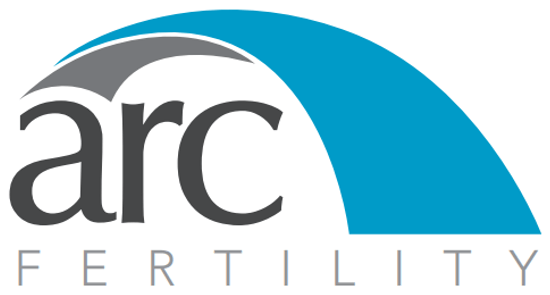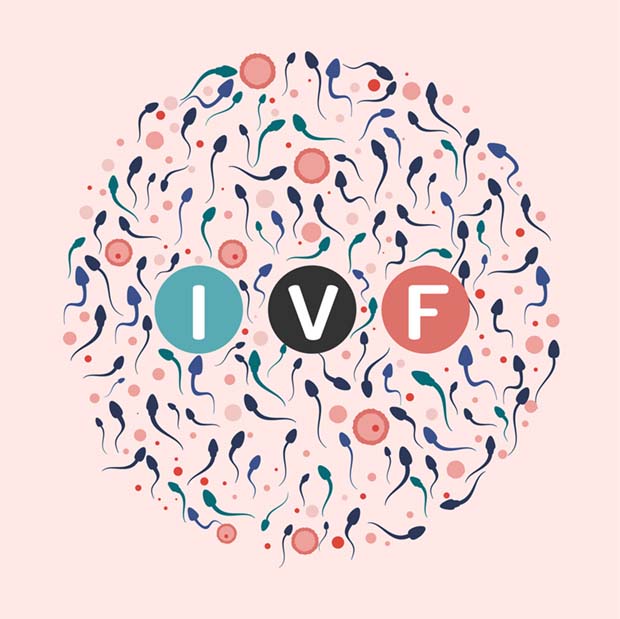IVF Treatment
In vitro fertilization (IVF) is the most effective, commonly performed and final infertility treatment in the world. Still, unless you have gone through the IVF process, most people don’t know how IVF is done and the steps involved with this assisted reproductive technology (ART). You can consider this your introductory guide.
First, IVF is a sequence of procedures that involves fertilization of an egg outside a woman’s body in a specialized lab. It is often performed after other methods of trying to get pregnant have failed.
Watch a video about the IVF Process.
The IVF Process and Timeline
An IVF cycle begins after all the preliminary tests and diagnosis of your fertility status have been completed. You will have a meeting with your doctor or IVF coordinator who will plan with you your ovarian stimulation protocol, what type of fertilization procedure will be performed, potential testing of the embryos, whether a fresh or frozen embryo will be replaced, and the type of hormonal support for the luteal phase. The time to start the cycle and any medications that might be used before starting ovarian stimulation will be discussed and the plan finalized. Generally, an IVF cycle can start anywhere from 2 to 6 weeks after the plan has been made, depending on your menstrual cycles and clinic scheduling.
In some protocols you might receive oral contraceptives or other medications for 2 to 4 weeks before starting ovarian stimulation. Other times, you will start right in with ovarian stimulation which averages 10-11 days. When the follicles and hormones have grown enough, the “trigger” injection to cause ovulation is given and egg retrieval is done 34-36 hours later. Embryos are grown in the laboratory generally for 5 to 6 days before an embryo is replaced or sometimes all of them are frozen. After that, the luteal phase lasts about 2 weeks at the end of which a pregnancy test can be done.
Once your treatment plan is established, an IVF cycle might be finished in as little as 4 weeks if you start right away and all the embryos are frozen or up to 14 weeks or so depending on your menstrual cycle, protocol and clinic scheduling,
Preparation for an IVF Cycle – Testing and Ovarian Stimulation
Before IVF, you’ll have an evaluation of your uterus and fallopian tubes to make sure there are no issues that require surgical repair. Pre-cycle testing includes hormonal evaluation to assess thyroid function and ovarian reserve, screening both partners for sexually transmitted infection, and a semen analysis of the male partner.
Most women will take fertility drugs for ovarian stimulation for 8-14 days; the average is 10-11 days. Ovarian stimulation is used to mature multiple eggs for egg retrieval. Even if ovulation is normal, fertility drugs are used to produce more than a single egg because pregnancy rates are higher when more eggs enable more embryos to be produced so that more embryo transfers are possible. An average of 10 – 20 eggs are usually retrieved for IVF. However, not all of them are viable to use as on average only about two-thirds have the appropriate maturity.
Your physician will carefully design a protocol to try to obtain the maximum number of eggs while protecting against the development of ovarian hyper-stimulation syndrome (OHSS). Fertility drugs for IVF are usually injected, and you’ll be frequently monitored using hormonal testing and vaginal ultrasounds for the best result. Once an ultrasound determines you have a sufficient number of large enough follicles and your estrogen level is at the right level, you’ll receive a trigger shot of hCG or other medication. This replaces the natural luteinizing hormone surge a woman has that spurs the final stage of egg maturation, so eggs are capable of being fertilized.
Egg Retrieval
Thirty-four to thirty-six hours after receiving the trigger shot – before the eggs ovulate – you’ll have a surgical procedure to remove the eggs from follicles in your ovaries. For this egg retrieval procedure, an ultrasound is used to visually guide a small needle through the top of the vagina into one ovary and then the other. You shouldn’t experience any pain or discomfort during the process as you’ll be under sedation through an IV while closely monitored by an anesthesiologist.
Follicles are entered with the needle and the follicular fluid contents are removed using gentle suction that brings the egg along in the fluid; the entire process usually takes less than 30 minutes. You may feel some minor cramping the day of the procedure which is usually gone the next day. There may be a feeling of fullness and/or pressure due to expanded ovaries from the ovarian stimulation. This may last for a few weeks.
The fluid from the follicles – that contains the egg – is suctioned by the IVF physician through small tubing and into a test tube. The test tube is then handed to an embryologist who uses a microscope to find the egg in each test tube of follicular fluid. Details of the eggs are carefully recorded. The number of eggs produced and removed are influenced by a patient’s age, ovarian reserve, response to ovarian stimulation and, occasionally, the ability to access the ovaries with the needle.
Fertilization
Once eggs reach the lab, experts examine them to determine maturity and quality. Mature eggs are transferred into a special culture medium, placed in an incubator and within a few hours of egg retrieval are fertilized with sperm. There are two ways to fertilize an egg: conventional insemination or intra-cytoplasmic sperm injection (ICSI). Which process is used will be determined by your IVF team (physicians and embryologists) and depends on multiple factors related to those going through IVF. Both methods have approximately the same success rate. ICSI is used approximately 70% of the time when factors make fertilization less likely due to poor semen quality or previous IVF failure.
For the conventional method, sperm is placed in the culture medium in a small petri dish containing an egg; the sperm and eggs are incubated together in the dish in the lab, allowing the sperm to enter the egg on its own. For ICSI, one sperm is injected into the cytoplasm of the egg using a needle and a sophisticated operative microscope. No matter which process is used, fertilization is checked the next morning.
Embryo Transfer
Following fertilization, the IVF team and the couple determine exactly when embryo transfer will take place – anywhere between 1 and 6 days but usually 3-5 days after egg retrieval if a fresh embryo transfer is being performed. However, if the decision is made to do preimplantation genetic testing (PGT), first a biopsy is taken from the embryo, almost always on culture day 5 or 6. Usually 3 to 8 cells are sent for testing performed at an outside lab, while the embryos are frozen and remain in the IVF laboratory. After receiving the genetic test results, the selected embryo is chosen, thawed and transferred into the uterus, usually within 1 to 2 months after the egg retrieval.
The number of embryos produced depends on several factors including the age of the woman. In the past, multiple embryos were transferred in the hope of maximizing the chance of success, but this often resulted in twins or rarely triplets, both of which are associated with pre-term birth and other serious complications to both babies and mother.
The safest approach is to limit transfer to a single embryo. To maximize the chance for success, the healthiest embryo is selected by the embryologist based on an embryo grading system used to evaluate each embryo. If PGT has been performed and the embryo is reported to be normal, then single embryo transfer should always be done.
A soft, flexible, and thin catheter is used to transfer the embryo into the uterus. An abdominal ultrasound is used to make sure that the tip of the catheter places the embryo at the best location for the embryo to implant. Pain and discomfort are rare, and the experience has been compared to how it feels to get a pap smear. Good embryos not used for transfer are usually frozen in case the cycle is not successful or the intended parents(s) want more children following a successful first cycle.
Hopefully, the development of the embryo continues in the uterus and the embryo hatches and implants in the uterine lining within 1-2 days following embryo transfer.
Assisted Hatching
Sometimes an additional process is used to provide further help for older women, for couples who have previously been unsuccessful with IVF or with frozen/thawed embryos. Assisted hatching is a micromanipulation procedure where a hole is made in the flexible shell that surrounds the cells of the early embryo. Normally, this membrane dissolves on its own since this is necessary for embryo implantation. This extra process has not been demonstrated definitively to improve live birth rates and there may be very minor risks involved. Also, there is no evidence that it improves pregnancy or live birth rates for other types of IVF patients. Assisted hatching, if performed, is done just prior to embryo transfer.
Pregnancy Test
About 12 days after an embryo transfer, you’ll have a blood pregnancy test. If a pregnancy is confirmed, you’ll be followed with blood tests and eventually, ultrasounds, to confirm viability and whether there’s a multiple pregnancy. If the pregnancy appears normal at 9-10 weeks, you’ll be referred back to your obstetrician!
Related Articles …
Your Top IVF Questions Answered
IVF Success Rate & Cost Calculator
IVF Affordable Treatment Packages


